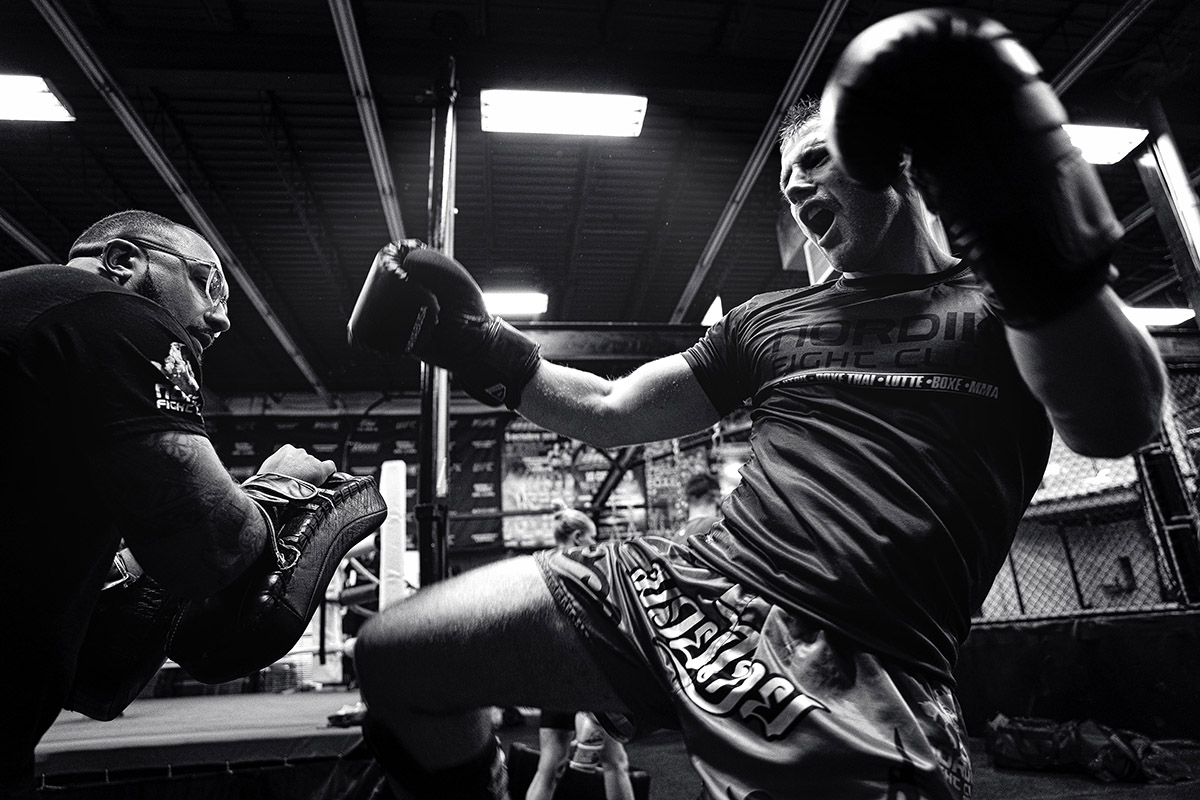The Action and the In-Between
Michele Grenier captures elite sports portraits with her Tamron 20-40mm F/2.8 Di III VXD zoom.
Share the article:
More Photo Tips | Video Gallery | Photo Gallery | Enewsletter sign-up
By Jenn Gidman
Images by Michele Grenier
Until she was 30, Michele Grenier had never picked up a camera. Then a photographer friend asked Michele if she’d mind assisting at some local weddings, and Grenier unearthed a passion she’d never known she harbored. “I started taking photography classes, and before you knew it, I thought: I want to change careers and do photography for a living,” she says.
Now, less than a decade later, Michele is an elite sports action commercial and advertising photographer based in Quebec, drawing inspiration from her years of CrossFit training. “When I first started taking photography classes, I’d head to the gym afterward to train and bring my camera with me,” she says. “It was natural to develop my photography skills through an activity I already loved doing.”
Although many sports photographers with Canadian roots might gravitate toward ice hockey, Canada’s national winter sport, the helmets that hockey players wear have driven Michele toward other activities. “When I photograph, I need to see the athletes’ faces,” she says. “One of my goals when I take someone’s portrait is to bring out the intensity of the moment they’re in while training or competing—capturing, say, that deep breath before they’re about to do a big lift or head into the boxing ring, or when they’re resting in between matches with their coach by their side, sweat streaming down their face, planning their next move. I find those ‘in-between’ moments as compelling as the moments where they’re deep in competition.”
Most recently, Michele has been using the Tamron 20-40mm F/2.8 Di III VXD zoom for her Sony mirrorless camera system to document her subjects. “I was previously shooting with prime lenses, so it’s been amazing having the versatility of a zoom to change up my compositions on the fly,” she says. “If I want to go a little wider now and capture more of the environment, or zoom in for a more intimate portrait, I can do so without having to change positions.”
For most of the type of portraits she takes, Michele finds herself in venues with less-than-ideal illumination. “Gyms often have poor lighting,” she says. “Having that maximum F/2.8 aperture on the 20-40mm compensates for that. It helps me keep my ISO at bay. And even if I’m in situations where I don’t have to open up all the way to 2.8, I usually do anyway, because I like to achieve that nice bokeh and separate my subject from their background.”
Thanks to its light weight and compact size—the lens comes in at 12.9 ounces and is just 3.4 inches long—the 20-40mm has proven itself an ideal lens for handholding during longer meets and matches. “If you cover a lot of sporting events that required travel, the 20-40mm is perfect,” Michele says. “You can pack that one versatile lens instead of several heavier primes, saving yourself a lot of room and excess weight.”
MICHELE’S QUICK TIPS
• Make yourself as invisible as possible.
If I could have one superpower as a photographer, this would be it. I try to dress in dark colors with no patterns, and to always keep my body low and unobstructive so I don’t distract my subjects. I’m usually sitting or on my knees, and sometimes even lying on the ground. I don’t want to be completely forgotten, but I also don’t want my subjects to keep catching my eye and remembering that I’m following them around.
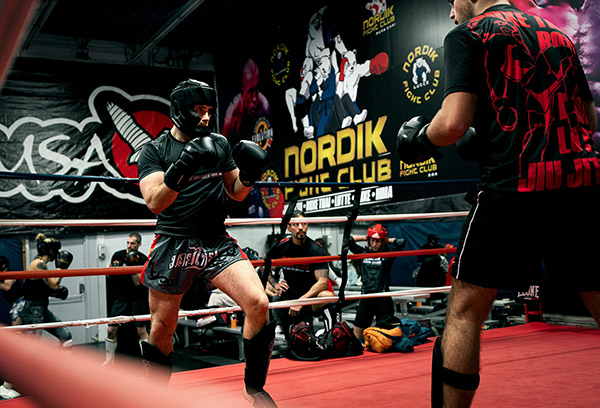
20-40mm (40mm), F/2.8, 1/500 sec., ISO 1600
Click image to view larger
I also never use a flash while photographing athletes. It feels disrespectful to set a light off in the face of someone who’s practicing or, even worse, competing. That’s one of the reasons I love using the 20-40mm F/2.8, because it allows me to let in the light I need so I don’t require supplemental lighting.
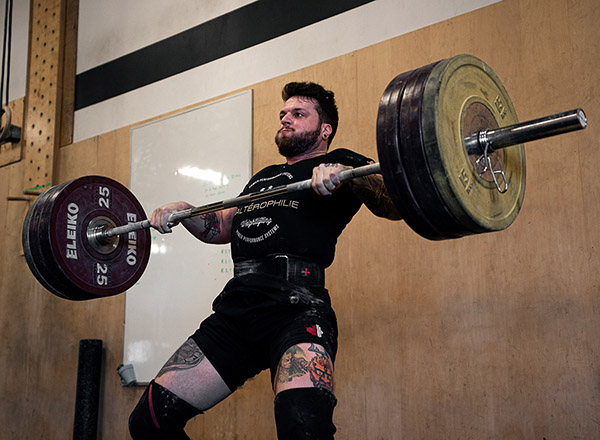
20-40mm (40mm), F/2.8, 1/800 sec., ISO 1250
Click image to view larger
• Find unusual perspectives.
That could mean me photographing through the ropes of the boxing ring for a frame-within-a-frame type of look. I love putting various elements in between my lens and the athlete. Or look for those perspectives you don’t see other photographers doing. Take the photo you see here of the gymnast that I shot from underneath the parallel bars. Obviously I captured this during a practice—I wouldn’t be allowed to be positioned in that spot during a competition. In fact, training and practices are among the best times for photos. You get more access and the ability to take these kinds of shots.
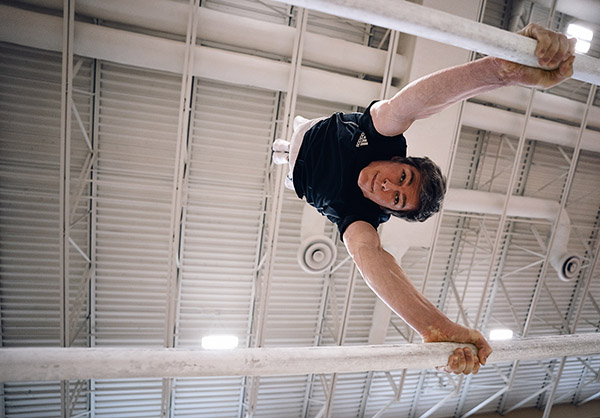
20-40mm (40mm), F/2.8, 1/500 sec., ISO 1250
Click image to view larger
I also find that, counterintuitively, the less I know about a particular sport, the more creative I become. I don’t hyperfocus on a movement or action, because I’m not really anticipating or looking for those motions or actions beforehand. I’m looking at what I know best—composition, lighting, expressions. In fact, the photo I took from underneath the parallel bars was my first time ever photographing gymnastics.
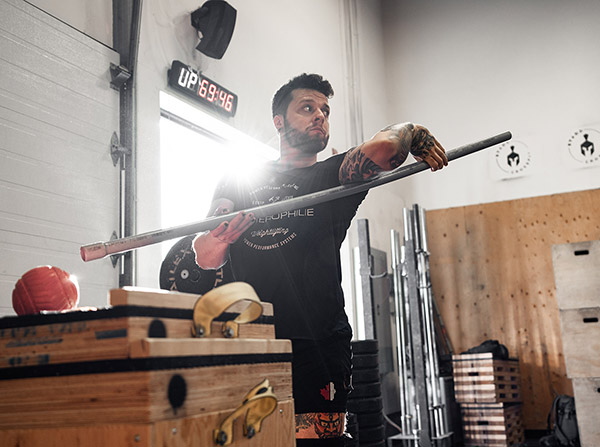
20-40mm (40mm), F/2.8, 1/500 sec., ISO 1000
Click image to view larger
• Look beyond the ‘action’ and victory shots.
Detail photos, or snippets of your subject warming up or deep in thought before competing, are just as compelling when you’re trying to tell an athlete’s story. I recently shadowed a boxer during one of his fights, and I focused more on his expressions and emotions, even when he wasn’t in the ring—photos of him hugging his mother, for example. He told me he liked my photos best out of all the pictures that were taken of him.
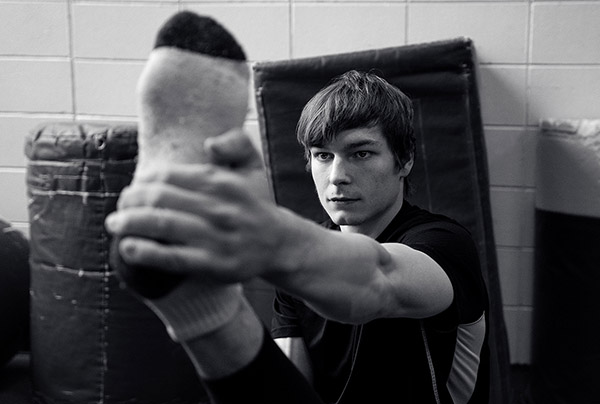
20-40mm (40mm), F/2.8, 1/500 sec., ISO 2500
Click image to view larger
Capturing only the “winning” shots isn’t the key, either. One of my favorite photos of the boxer I just mentioned was after he lost his fight and was descending the boxing ring’s stairs, sweat dripping, with a look of utter disappointment. It wasn’t the outcome he’d wanted, but it was what happened. The photo I took of him captured exactly what he was feeling in the moment. You have to remember you’re documenting reality.
• Don’t be afraid to edit to your advantage.
I specialize in advanced post-processing—I get as much pleasure in editing pictures as I do in taking them. That’s because editing tools allow you to get your image to where you want them to be. That image of the gymnast on the pommel horse looked very different originally. There were holes in the wall and ropes behind him, which I found very distracting. With post-processing, I can eliminate those distractions and add a little light and vignette to draw your eye more to the subject. And, if done well, you’ll never know there was any post-processing involved. I’m not a photojournalist, so I can conform the image to whatever my artistic vision is.
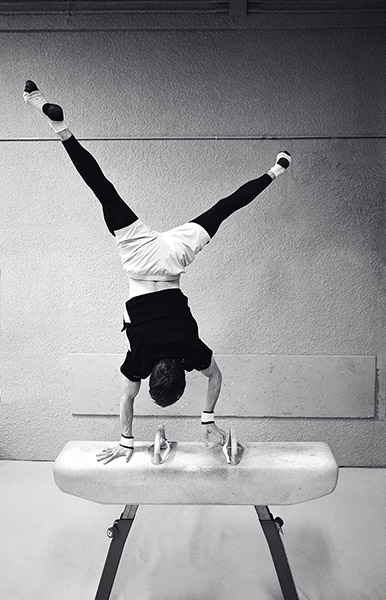
20-40mm (29mm), F/2.8, 1/500 sec., ISO 2500
Click image to view larger
• Consider converting to black and white.
Sometimes a venue’s lighting is so bad that it takes away from the attention I want on the athlete. That’s when pivoting the image to black and white works well. One thing I do is squint my eyes a bit when I’m looking at a photo—if I can make out distinct forms, that means there’s high contrast and the image might work well as a black and white. Converting a photo from color to black and white also offers a more vintage vibe, if you want to create a more timeless photo.
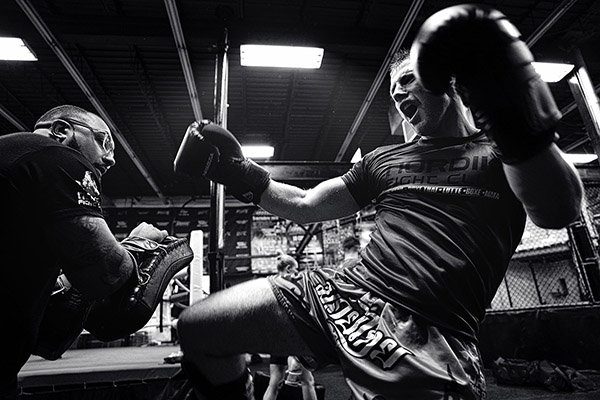
20-40mm (20mm), F/2.8, 1/500 sec., ISO 2000
Click image to view larger
To see more of Michele Grenier’s work, check out her website and Instagram.
More Photo Tips | Watch Videos | Learn More About Tamron Lenses | Photo Gallery
